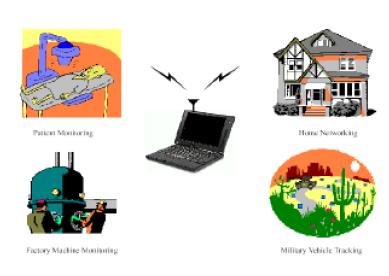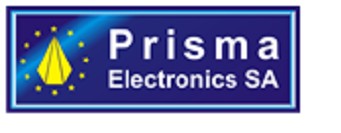Background
Concept
The implementation of Intelligent Micro Systems (IMS) will require the achievement of new components that are reliable and able to manage simultaneously high RF powers and reconfigurability properties (such as changing output power and bandwidth requirements). A successful integration of nanostructured materials and novel sensors and actuators in RF Micro Electro Mechanical Systems (RF-MEMS) switches will enable miniaturized reconfigurable microwave components and systems with very high power handling and reliability capabilities (e.g. adaptive transmitters and frequency-agile robust receivers). Therefore, the main concept of NANOCOM to realize novel types of microwave functions (reconfigurable front-ends) combining nanostructured materials and RF-MEMS low-loss switching networks is in line with the objectives reported in the previous lines of the ENIAC 2010 Annual Work Programme. Sensors and actuators are important for environmental and greenhouse monitoring where for example the carbon cycle is monitored and greenhouse gases and their corresponding fluxes are evaluated. These include methane, CO2, NOx and O2.Satellites are used for wide area sensing and the possibility of combining such sensors with wireless data transmission and communication is very attractive. The same applies to wireless telemetry approaches for transmitting power and data to and from sensors located inside parts that are likely to be subjected to deformation. Micromachined components made for example on GaN may be used as actuators but also as varactors with highly linear features that could serve to signal tuning.
Systems comprised of nitride-based sensors and actuators combined with nitride transistors and MEMS will allow the realization of complex functions in integrated form and will allow the realization of energy efficient systems.
The successful implementation of the objective mentioned above, coupled with a thorough assessment of the market and the needs of end-user/industrial partner of the consortium, will lead to the production of four demonstrators in order to prove the feasibility of the various technologies and their integration.
As described above, the NANOCOM objectives contribute directly to several scientific and technical objectives of the ENIAC Priority, addressing several requirements specified in work programme, SP2 and also SP3.
Objectives
The main objectives of NANOCOM is develop innovative integrated solutions for the RF front-end baseband by fabrication of Agile RF transceiver and Reconfigurable antennas with MEMS switches, sensors and actuators. In order to achieve the re-configurability required for future smart systems these switches must show long-term reliability.
RF-MEMS have a crucial role to play here through the development of filters, high-Q inductors, tight tolerance capacitors, high-density capacitors and low loss switches to enable novel and improved RF transceiver front-ends. RF MEMS switches (used for single pole double throw, SPDT) appear as fundamental technologies in order to achieve the re-configurability required for future smart systems, thanks to their high RF performances (power handling, insertion loss or isolation), low power consumption, high linearity and high level of integration. The route towards re-configurability of high power systems requires the merging of this technology and functions, but they are not shown up to now. That’s why this project is aimed at bringing together advanced microwave functions using sensors and actuatorsalong with RF MEMS active interconnections.
Currently, the long-term reliability problems associated with RF-MEMS devices have delayed their use in commercial applications. This the real industrial problem that must be resolve by the industrial project and industrial requirements. The main problems associated with standard MEMS capacitive devices are the dielectric charging and temperature sensitivity of the movable membrane.
The overall objective of the project is to integrate WBG devices and the RF MEMS technology and bring this technology to the market by introducing new solutions based on nanotechnology to the problem of reliability of MEMS devices. These RF MEMS integrated with WBG technology will be used for four demonstrators developed by three industrial companies.
The reliability problem of RF MEMS will be solved by introducing nanotechnologies to master the physical properties of the dielectric inside the MEMS structure. It is the first time that an industrial driven project is using nanotechnologies.
This main goal can be decline in five objectives for NANOCOM which are as follows:
- Objective 1: Achieve the integration of WBG devices and RF MEMS switches on GaN/Si substrate and RF MEMS development on novel substrate such as LCP
- Objective 2: Achieve the long-term reliability of RF-MEMS by solving problems associated with these devices to bring this technology to industrial systems
- Objective 3: Realize and optimize WBG based sensors and actuators and develop the necessary technology for their monolithic integration with WBG MMICs and RF MEMS
- Objective 4: Display the integration of all of these technologies through 3 demonstrators.
- Objective 5: After fabrication of these demonstrators the fabrication process flow compatible with the technical requirements specified and compliant with a short time-to-market will be transfer by TRT to a foundry for industrializing fabrication process. This foundry will be found very soon after the starting date of the project. Prisma Electronic will use this technology in wireless sensor communications and power consumptions, and we will use the results of the project in real applications.
The charging effect is related to the quality of the dielectric and its ability to evacuate the charges during cycling of the device. Many efforts are done today all over the world to solve such problem.
The solutions will come from the capability to control the electrical paths through the dielectric at the nanometer scale. Though one can control the grain boundaries or other defects (which are paths for electrical conductivity) during the dielectric growth it can be better to engineer the dielectric layers by integrating electrical conductive materials within the dielectric itself. Such technologies have already been studied for other purposes (Columnar structured perovskite materials, Carbon Nanotubes, and more recently diamond pillars) and have acquired enough maturity to be processed within the MEMS technology process. It is the objective of NANOCOM to integrate these new nanostructured materials in the MEMS technology to address the charging effect and, at the same time, enhance the thermal performances of the device (increasing the power handling capability).
Gallium nitride based materials are suitable for use at high temperatures and in harsh environments due to their physical and chemical properties. These attributes, combined with piezoelectric and mechanical characteristics, are the base of a considerable interest in sophisticated piezo- GaN sensors and actuators. The devices to be explored are robust and highly sensitive gas detectors and can also serve as mechanical GaN-based tunable capacitors. They are based on AlGaN/GaN heterostructures grown on Si substrates.
The resolving of the MEMS charging; bring this important technology directly to market implementation, There were many research in this technology until now, to bring this technology to the market but; the charging problem is now the only gap between this promising technology and the market. As this problem is the problem of the industry and this is the last step before industrialisation of MEMS RF (bring this technology to the market ) NANOCOM project (leading by industry) propose to resolve this problem and bring this technology to the system and market.
- Explore and evaluate new nanostructured materials to be used as dielectrics in RF-MEMS devices in order to achieve higher reliable devices by minimizing charging effects and by improving thermal dissipation under high power using CNTs in Si3N4 for example.
- NANOCOM will develop the design methodologies and technological process to achieve the integration of the nanostructured capacitive switches Single Pole double throw devices. The insertion of nanostructured MEMS in such function will bring them to unrivalled levels of agility and reliability. In the NANOCOM project, phase-shifting cells for active antenna in X-Band frequency range will be fabricated on the basis of NANOCOM process flows.
- Demonstrate the improved performances of these devices through the fabrication of a T/R module, a tunable filter on Si, Alumina , GaN and LCP substrate
- The successful implementation of the objective mentioned above, coupled with a thorough assessment of the market and the needs of end-user/industrial partners of the consortium (TSA, TOPGAN, MicroGaN, TRT and Prisma), will lead to the production of 3 demonstrators in order to prove the feasibility of the various technologies and their integration: (answering topics Agile Radio, Agile RF transceiver, Energy Efficient systems)
1st demonstrator: Reconfigurable smart active antennas with RF-MEMS switches (Agile RF transceiver)
figure 1: T/R module for active antenna. In NANOCOM , we will replace circulators by RFMEMS SPDTs integrated on the same substrate as the HPA and LNA.
2nd demonstrator: RF-MEMS based Agile Radio (Tunable filter)
3rd demonstrator: A miniaturized piezo sensor and actuator based on III-Nitride materials (Energy Efficient systems through Piezo MEMS sensors and actuators
figure 2: Applications of wireless microsensor network with integrated sensor/actuator and microwave
functions
















